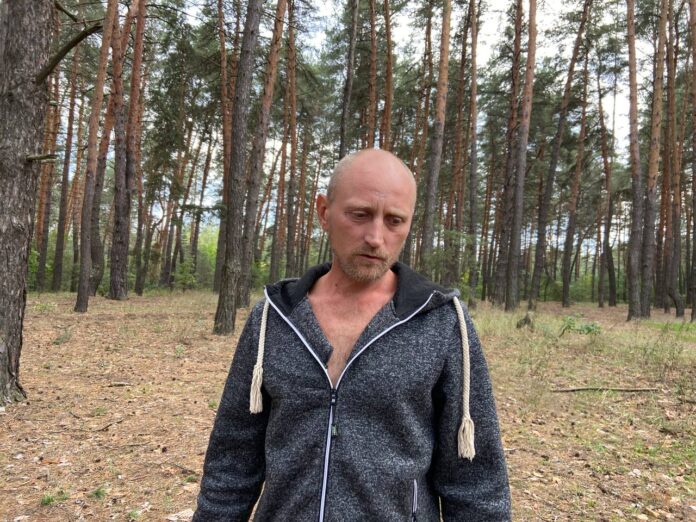DIBROVA, Ukraine — Viktoriia Nikolienko’s house in this recently liberated village looked undamaged by war. Until she began to talk about what happened to the family members who once lived in it.
Hours before Ukrainian forces reached Dibrova on Sept. 10, Russian forces took away her husband Arsen Ambartsumian, 49, and her son Artem Nikolienko, 21, she explained.
Their bodies were found in the woods the next day. They had been blindfolded with traditional Ukrainian embroidered shirts called vyshyvankas and they had been shot.
“Neighbours heard shooting, they lived not far from it, but they didn’t come,” Nikolienko said in an interview at her home southwest of Izyum.
Her daughter Karina and sister Liudmyla are also missing since leaving for Izyum to visit their grandmother.
“It’s more than 10 days already. I don’t know where they are,” she said.
The Ukrainian military offensive that has pushed the Russian army out of the country’s eastern Kharkiv region has rattled President Vladimir Putin, prompting him to mobilize reserves and even threaten nuclear war.
It has also unearthed what appear to be atrocities committed by the Russian forces during their five-month occupation of Izyum and surrounding villages like Dibrova.
War crimes prosecutors finished exhuming bodies from a mass grave site in Izyum on Friday and said they had found evidence of torture and executions.
One hundred of the recovered bodies showed signs of unnatural deaths, and their killings appeared to have resulted from shelling, stabbings and strangulation, authorities said.
Several had their hands bound behind their backs, or were missing limbs, said Yevhen Dokolov, head of the Kharkiv Regional Prosecutor’s Office.
Svitlana, Olha and Angelina (left to right), residents of Izyum, Ukraine.
Anna Vlasenko
Volodymyr Nazarenko, head of Izyum’s emergency services, said constant artillery shelling and air attacks destroyed the city’s infrastructure.
“We lost electricity and mobile connection first, then gas and water,” he said.
Air strikes began on the night of Feb. 28 and continued until March 1, he said. Shops were bombed or burnt, and then plundered. From March 5, most hid in basements. Shelling was heard all the time.
“In one place we had 1,500 people with kids. The picture was horrible. They didn’t have water or food.”
Read more:
Russians fleeing mobilization order arrive at Finland’s border — ‘I just wanted to be safe’
On the gate of the emergency service building, staff put a list of addresses and dates when they delivered food — porridge and milk from the nearest farms.
While some were evacuated from the city, others got used to the conditions and returned to their houses — if they were not destroyed. Others stayed in basement shelters.
During the initial months of the war, hundreds died, their bodies dumped in mass graves uncovered by Ukrainian troops when they liberated the city.
The graves, located in a wooded area near an old cemetery, contain some 445 civilians and 17 Ukrainian soldiers. They are marked with wooden crosses that bear no names, only numbers.



